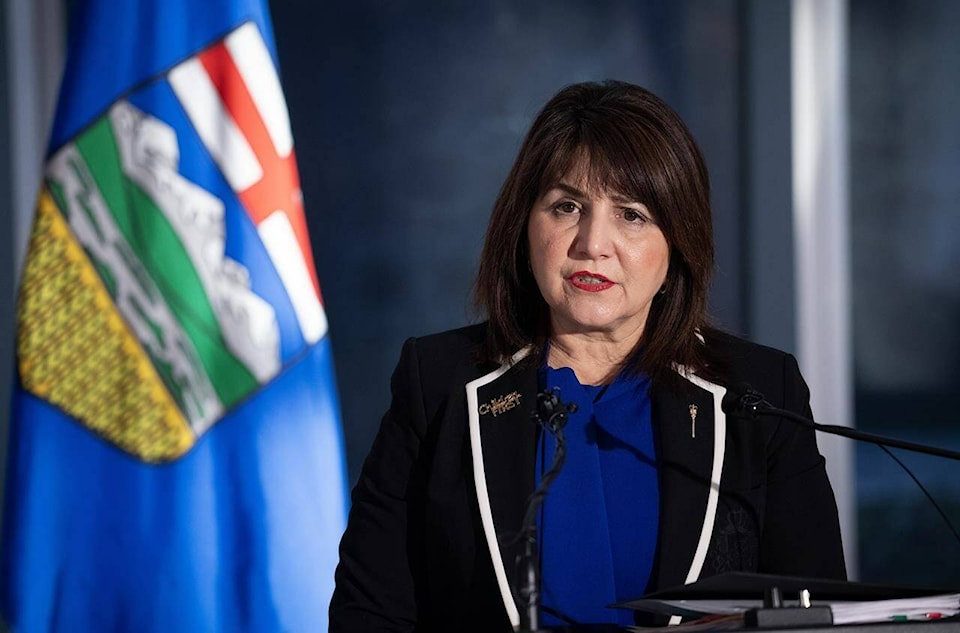By George Lee, Local Journalism Initiative Reporter
The Macleod Gazette
Revamped advisory councils blanketing the province will help ensure that the government understands and addresses rural health-care challenges while improving service, the health minister said Monday.
Rural Alberta will be heard through 13 new advisory councils – 12 regional and one Indigenous – that give traction to diverse concerns and ideas, said Adriana LaGrange.
Remote and rural communities deserve services equitable to those available in Calgary and Edmonton, LaGrange said in an interview for member publications of the Alberta Weekly Newspapers Association.
“Yes, there are geographic challenges. And if we don’t address those challenges, then there will always be disparity,” said LaGrange, the member for Red Deer-North.
“So I want to make sure that we are, in fact, hearing all the voices, with the aim of providing better health care.”
Officially announced Tuesday, the advisory system reflects what health-care workers and the public repeatedly tell the province. “They want to be involved in health care and they want their voices heard. That’s been a consistent message.”
About 65 in-person engagement sessions have been held across Alberta so far, attracting about 3,000 attendees. LaGrange said she’s attended about half of them. Telephone town halls attracted about 10,000 Albertans and 18,000 made their opinions known online.
The formation of new advisory councils builds upon an announcement in November that the province is restructuring Alberta Health Services from a single authority into four pillars: primary care, acute care, continuing care, and mental health and addiction.
The province describes the move as a refocusing to allow specialization for better health-care delivery. Opposition and other critics, however, have charged that the changes will create silos that break down communication and disrupt the flow of service.
But LaGrange said an integration council overseeing the pillars will work across ministries and keep siloing in check.
“We want to have a seamless patient journey. And that will be the type of information and the type of input that I want to hear directly from the regional advisory councils and the Indigenous council.”
Regional councils will look at clinical, capital and workforce planning in their regions, said Tuesday’s news release. They’ll explore potential solutions to local challenges and identify opportunities to better support local decision-making.
Extra roles for the Indigenous advisory council are the design and delivery of culturally appropriate health care programs and services. It will also explore “opportunities to integrate and embed traditional Indigenous healing practices and teachings,” said the release.
Each region’s advisory council will comprise at least 16 members. The Indigenous council, however, will have at least 22 members. Some appointees to the Indigenous council may be dually appointed to their geographically corresponding regional council.
Councils will be a mix of successful applicants and members appointed directly by the province as public members. The government appointments will allow the province to fill gaps in skillsets, occupations, community leadership and experience not represented by applicants, the minister said.
The membership number on the Indigenous council reflects expert advice on the diversity of First Nations, Métis and Inuit communities in Alberta, said LaGrange. She also noted that Indigenous peoples have unique health-care needs that the province needs to address, like a prevalence of diabetes and heart disease.
An overlap of responsibility with the federal government doesn’t change that. “Whether you’re on reserve or off reserve, you’re Albertan, and we want to make sure that every Albertan has health care when they need it,” said LaGrange.
AHS has about 112,000 direct employees, not including contracted service providers and employees of its wholly-owned subsidiaries, the AHS website says. It has 106 acute care hospitals and more than 8,600 acute care beds across Alberta, more than 29,000 continuing care beds or spaces, five stand-alone psychiatric facilities, about 3,200 addiction and mental health beds or spaces, and equity partnerships in 40 primary care networks.
Budget 2024 tabled on Feb. 29 set an operating budget of $26.2 billion for the health ministry, up 4.4 per cent from the 2023-2024 forecast.
Tuesday’s press release said the councils will represent a wide range of lived and professional experiences. The government wants everyday Albertans receiving health care services to apply. It’s also seeking applications from health-care workers, community leaders, municipal representatives and others.
LaGrange said better outcomes are the goal. “We are seeing improvements with some of the changes we’ve already made. But I want to see more improvement as we go.”
The province has estimated the cost of health care refocusing at $85 million, which is disputed as too low by critics.
LaGrange said the expense of the new councils is worth it.
“The greatest strength of the health care system in Alberta is its workers. And they’re excellent, caring, compassionate individuals who really want to use their skill-set to the best of their ability and provide excellent patient care. So we want to make sure that’s able to happen,” she said. “For a small investment, I believe this will provide huge value.”
Individuals interested in joining a regional advisory council can apply online at ApplyHealthRAC.alberta.ca. Those interested in joining the Indigenous advisory council can apply at ApplyHealthIAC.alberta.ca.
Those who apply before April 22 will be considered for appointment this spring. Applications received by Aug. 30 will be considered for appointment by the end of the year.
Borders of regions will be similar to the ones that already exist. In the north regions will cover the northwest corner of the province, and the Peace, Lesser Slave Lake and Wood Buffalo areas.
The Greater Edmonton region will be surrounded by a Lakeland area region to the northeast, one to the north and west extending to the B.C. border, one east to the Saskatchewan border, and one below the city encompassing the rest of central Alberta.
And, three more regions cover the south – one encompassing Calgary and area, one in the southwest corner of the province, and one in the southeast covering an Alberta section of the historic Palliser Triangle.
